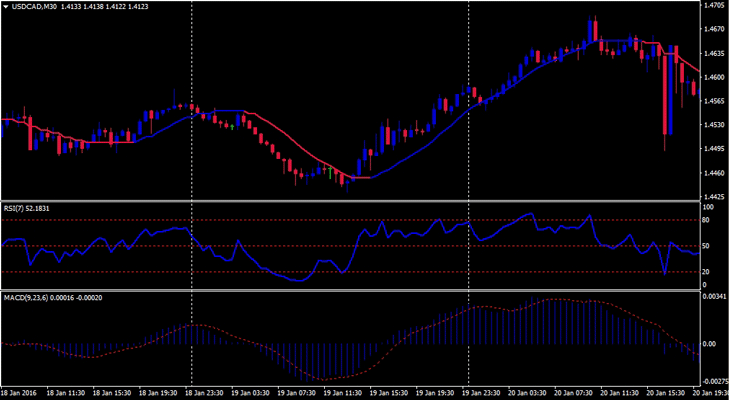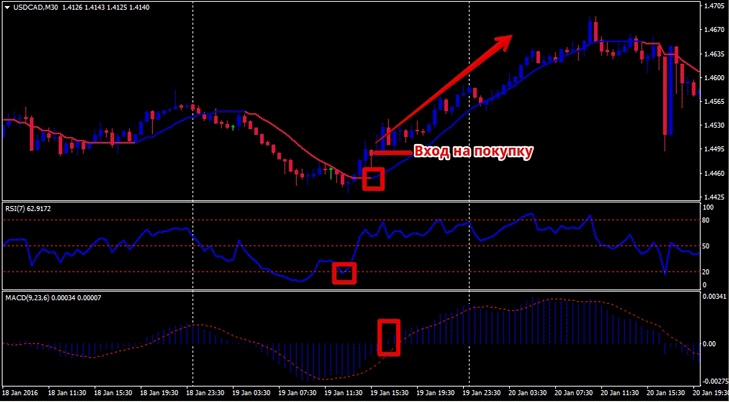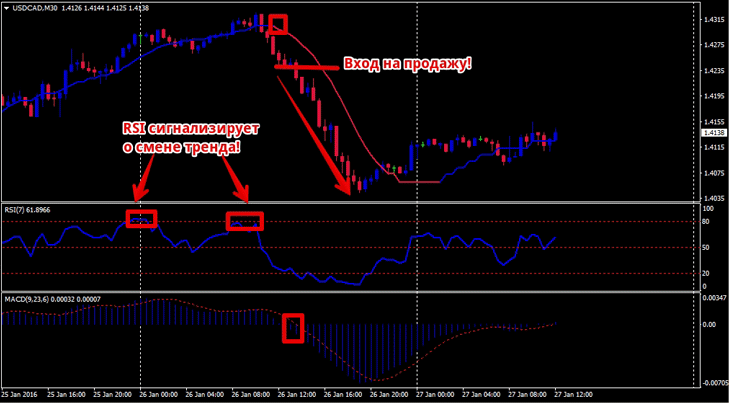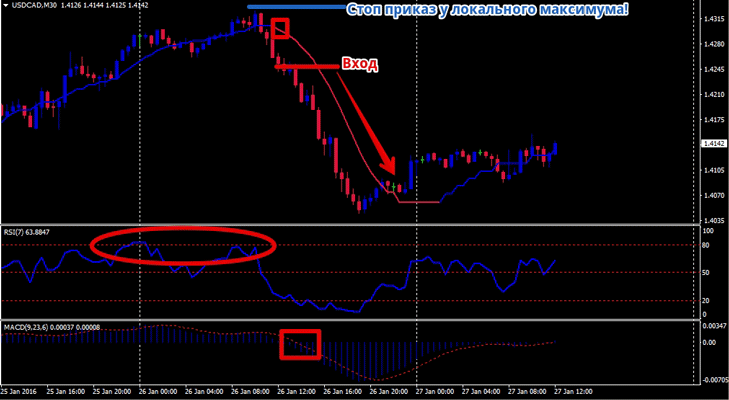RSI strategy
The RSI indicator is one of the most popular oscillators, which is used by almost all traders.
traders.
The abundance of trading signals, such as selling and buying in overbought and oversold zones, breakout of the average level and divergence, allows you to use the indicator even alone.
However, as practice shows, in independent navigation, RSI is very weak in trending markets, therefore, in order to enhance the effectiveness of this tool, it is most often used with additional trend indicators.
The RSI strategy is a universal trend strategy based on the most popular RSI oscillator.
This approach to the strategy is due to the fact that oscillators almost always predict possible reversal points in advance. Thus, having received a signal to enter a position from the RSI indicator , we wait for confirmation of a trend reversal on trend indicators, which saves us from a bunch of false assumptions.
Preparing the RSI Strategy for work
Despite the fact that the main indicator of the strategy is RSI, the strategy also contains a custom indicator. After you download the indicator and strategy template at the end of the article, you need to install them into the Meta Trader 4 trading platform.
To do this, you need to open the terminal data directory and place the indicator in a folder called indicators, and the template in the Template folder. After updating the installed components, in the Navigator panel, go to Templates and run RSI Strategy. As a result, you should get a graph like this:

Brief characteristics of the strategy. Indicators
The RSI strategy is multi-currency and is used on 30 minute, hourly, and four-hour charts. The strategy consists of three indicators, two of which are oscillators and are present in MT4 by default. So, briefly for each:
1) NonLagMA. It appears on the chart as a blue and red line, and in essence is a trend indicator. NonLagMA is a non-standard modification of the Moving Average indicator , and its main task is to visually display the direction of the trend.
In the settings, in the lenght parameter, you can set the period of the moving average. In addition to the color display, you can turn on a sound alert or an email alert if the indicator color changes, which makes it more convenient to use.
2) RSI. It is located in the first additional window in the form of a blue line. RSI is a standard indicator in MT4, which you can find in the oscillators section. There is only one stanza in the settings, namely the period. The higher the period you set, the more lagging the indicator will be, but if the period is too low, the RSI will react strongly to market noise.
3) MACD. An oscillatory type indicator in the form of a histogram. The settings specify the moving periods on the basis of which it is created.
Signals Strategy RSI
Buy positions:
1) The RSI indicator has touched level 20 or is in the oversold zone.
2) Wait for NonLagMA to turn blue.
3) MACD above the zero level.
It is worth noting that after the signal appears on the RSI indicator, you must wait until the two subsequent conditions are met. Remember, the RSI acts as a beacon that signals a future reversal. Example in the picture below:

Items for sale:
1) The RSI indicator has touched the 80 level or is in the overbought .
2) Wait for NonLagMA to turn red.
3) MACD below the zero level.

Installation of protective orders
According to our observations, strategy signals are formed near local minimums or maximums. Therefore, a protective stop order must be placed a couple of points from them. Example in the picture:

Subtleties of strategy
Having analyzed the history of possible transactions for the strategy, it is clearly noticeable that due to the addition of trend indicators, the strategy has a partial delay in signals.
However, with proper reconfiguration of indicators for the instrument, this drawback quickly disappears. Download the RSI Strategy tools


